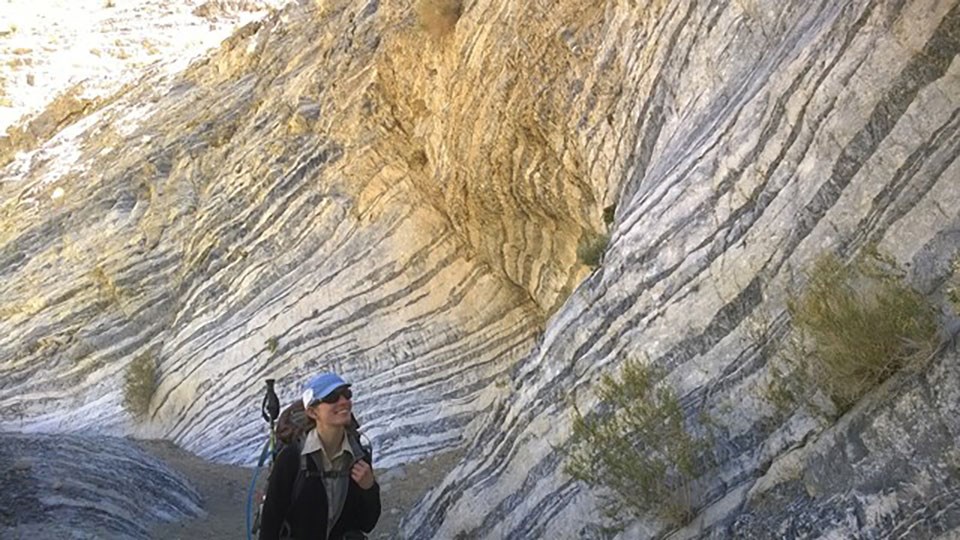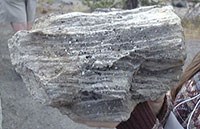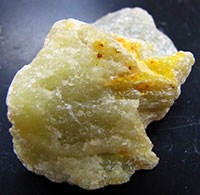
Introduction
Metamorphic rocks form when high temperatures and pressure act on a rock to alter its physical and chemical properties (metamorphism means 'to change form'). These conditions often stretch, twist and fold the rock as it cools. In metamorphic rocks some or all of the minerals in the original rock are replaced, atom by atom, to form new minerals. Types of metamorphic rocks include gneiss, quartzite, marble, schist, soapstone, and phyllite.
Parks with examples of metamorphic rocks include
- Catoctin Mountain Park, Maryland [Geodiversity Atlas] [Park Home]
- Death Valley National Park, California and Nevada [Geodiversity Atlas] [Park Home]
- Grand Teton National Park, Wyoming [Geodiversity Atlas] [Park Home]
- Rocky Mountain National Park, Colorado [Geodiversity Atlas] [Park Home]
- Shenandoah National Park, Virginia [Geodiversity Atlas] [Park Home]
Key Terms
-
Contact Metamorphism: A type of local, thermal metamorphism caused by the intrusion and extrusion of magmas; takes place in rocks at or near their contact with a body of igneous rock.
-
Parent Rock: Rock from which soil, sediment, or other rock is derived.
-
Regional Metamorphism: A type of metamorphism that affects an extensive region, as opposed to local metamorphism that is effective only in a relatively restricted area.

NPS photo by Tim Connors
Foliated Metamorphic Rocks
As pressure squeezes on a parent rock during recrystallization it causes the platy or elongated minerals within the rock to become aligned, or foliated. Foliated rocks develop a platy or sheet-like structure that reflects the direction that pressure was applied in. Types of foliated metamoprhic rocks include slate, schist, and gneiss. Gneiss records the ancient beginnings of the Appalachian Mountain belt at:
-
Antietam National Battlefield, Maryland [Geodiversity Atlas] [Park Home]
- Chesapeake and Ohio Canal National Historical Park, District of Columbia, Maryland, amd West Virginia [Geodiversity Atlas] [Park Home]
- Harpers Ferry National Historical Park, West Virginia, Virginia, and Maryland [Geodiversity Atlas] [Park Home]

Photo courtesy of Tina Kuhn
Non-foliated Metamorphic Rocks
Not all parent rocks have platy or elongated minerals and when these rocks undergo metamorphism the individual mineral grains do not align. Types of non-foliated metamorphic rocks include marble, quartzite and hornfels. Soapstone was used by the American Indians for tools and implements, and is found in:
- Rock Creek Park, District of Columbia [Geodiversity Atlas] [Park Home]
Extensive quartzite depositsis are well-known from:
- City of Rocks National Reserve, Idaho [Geodiversity Atlas] [Park Home]
Last updated: October 27, 2021
